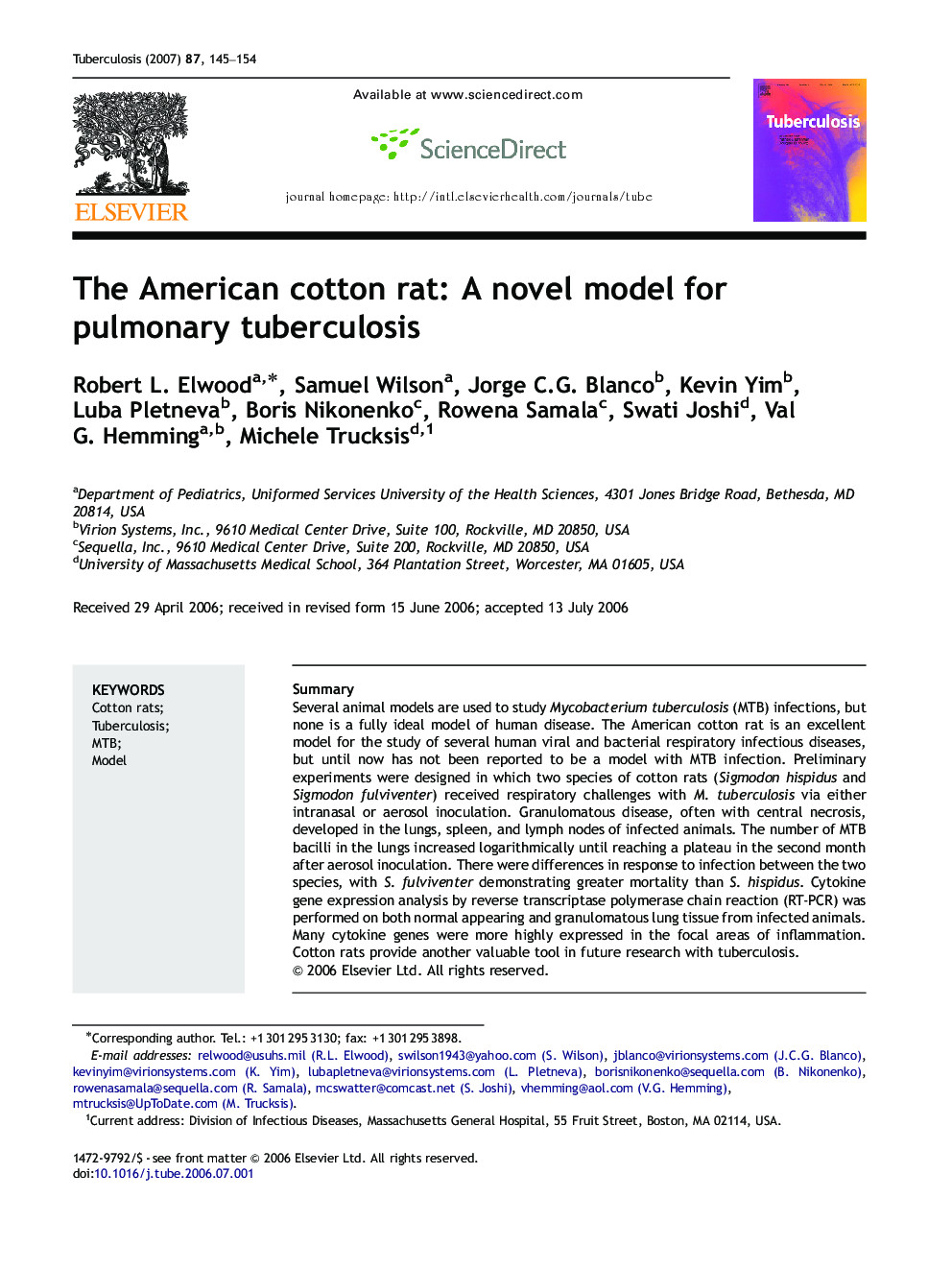| Article ID | Journal | Published Year | Pages | File Type |
|---|---|---|---|---|
| 2402010 | Tuberculosis | 2007 | 10 Pages |
SummarySeveral animal models are used to study Mycobacterium tuberculosis (MTB) infections, but none is a fully ideal model of human disease. The American cotton rat is an excellent model for the study of several human viral and bacterial respiratory infectious diseases, but until now has not been reported to be a model with MTB infection. Preliminary experiments were designed in which two species of cotton rats (Sigmodon hispidus and Sigmodon fulviventer) received respiratory challenges with M. tuberculosis via either intranasal or aerosol inoculation. Granulomatous disease, often with central necrosis, developed in the lungs, spleen, and lymph nodes of infected animals. The number of MTB bacilli in the lungs increased logarithmically until reaching a plateau in the second month after aerosol inoculation. There were differences in response to infection between the two species, with S. fulviventer demonstrating greater mortality than S. hispidus. Cytokine gene expression analysis by reverse transcriptase polymerase chain reaction (RT-PCR) was performed on both normal appearing and granulomatous lung tissue from infected animals. Many cytokine genes were more highly expressed in the focal areas of inflammation. Cotton rats provide another valuable tool in future research with tuberculosis.
